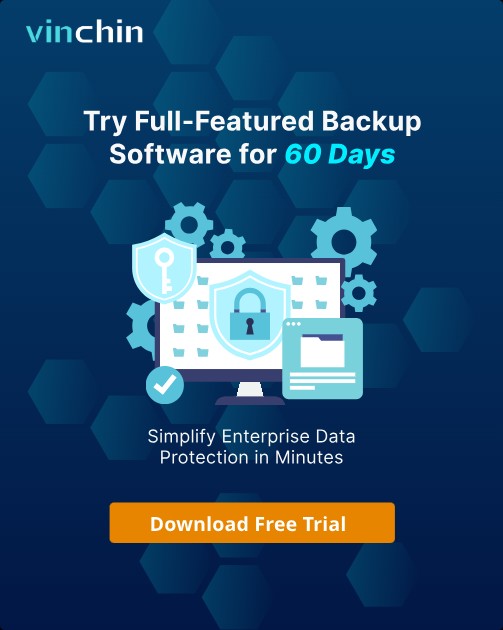-
What Does Shutting Down a Hyper-V VM Mean?
-
Why Use PowerShell for Shutdown?
-
Method 1: Graceful Shutdown with PowerShell
-
Method 2: Force Shutdown with PowerShell
-
Vinchin Backup & Recovery: Enterprise-Level Backup Solution for Hyper‑V and More
-
Shutdown Hyper V VM PowerShell FAQs
-
Conclusion
Managing virtual machines (VMs) in Hyper-V is a daily task for many IT administrators. Sometimes you need to shut down a VM quickly or automate this process across many servers. PowerShell offers a fast, scriptable way to do this—making it ideal for both one-off tasks and large-scale automation in enterprise environments. In this article, we’ll walk through how to shutdown Hyper-V VMs using PowerShell commands, from basic procedures to advanced troubleshooting.
What Does Shutting Down a Hyper-V VM Mean?
Shutting down a Hyper-V VM means stopping its operating system safely or forcefully turning off its virtual hardware resources. This action is similar to shutting down or unplugging a physical computer—but with virtualization-specific options that affect how data is handled inside the guest OS.
When you shut down a VM gracefully, the guest operating system closes applications and saves data before powering off—just like clicking Shut Down inside Windows or Linux. If you force shutdown instead, it’s like pulling out the power cable; any unsaved work may be lost instantly.
Hyper-V also supports other states like Paused (where memory stays in RAM but CPU stops) or Saved (where memory contents are written to disk). However, when you perform a full shutdown using PowerShell’s Stop-VM command without special parameters, the VM transitions into an Off state—completely powered down with no active processes running behind the scenes.
Why Use PowerShell for Shutdown?
PowerShell gives you more control than using graphical tools like Hyper-V Manager alone. With just one command line entry:
You can shut down one or many VMs at once.
Automate repetitive tasks by scripting them.
Handle stuck VMs that don’t respond through normal interfaces.
Integrate shutdown actions into larger maintenance workflows or scheduled jobs.
This flexibility makes PowerShell essential for anyone managing multiple Hyper-V hosts or needing reliable automation at scale.
Method 1: Graceful Shutdown with PowerShell
A graceful shutdown lets the guest OS close all programs and save data before powering off—a best practice whenever possible because it protects against data loss or corruption.
To perform a graceful shutdown of your Hyper-V VM using PowerShell:
1. Open PowerShell as an administrator on your Hyper-V host.
2. To list all VMs and their status, run:
Get-VM
3. To gracefully shut down a specific VM named "AppServer01", enter:
Stop-VM -Name "AppServer01"
4. Wait for the command to complete; the VM will go through its normal OS-controlled shutdown process before turning off completely.
Prerequisites for Graceful Shutdown
For Stop-VM to work gracefully:
The target VM must be in the Running state; if paused or saved, try resuming first with
Resume-VM -Name "YourVM".Integration Services must be installed inside your guest OS (Windows or supported Linux distributions). These services allow communication between host and guest so that shutdown requests are handled properly.
You can check Integration Services status by running:
Get-VMIntegrationService -VMName "AppServer01" | Where-Object {$_.Name -eq "Shutdown"}If Integration Services are missing or not operational—or if permissions are lacking—the graceful shutdown may fail or default to forced behavior instead.
Method 2: Force Shutdown with PowerShell
Sometimes VMs become unresponsive due to software errors or resource exhaustion—they won’t respond even when asked nicely! In these cases you have two main ways to force them off:
Using the Force Parameter
The -Force parameter tries graceful shutdown first but waits only five minutes before forcibly terminating power if there’s no response.
Steps:
1. Open PowerShell as an administrator.
2. Run:
Stop-VM -Name "AppServer01" -Force
3. The system gives your guest OS up to five minutes; after that time passes without success it cuts power immediately—so use this option carefully!
Using the TurnOff Parameter
The -TurnOff parameter skips any attempt at graceful handling—it powers off instantly without warning applications inside your guest OS.
Steps:
1. In PowerShell, run:
Stop-VM -Name "AppServer01" -TurnOff
2. The virtual machine turns off right away—as if someone yanked out its power cord physically.
Advanced: Killing a Stuck VM Process
Occasionally neither method above works—a rare situation where your VM gets stuck in Starting/Stopping state due to underlying issues with worker processes (vmwp.exe). Here’s how you can manually terminate those processes:
For Windows PowerShell 5.x (Legacy Systems)
1. Get your target VM’s GUID by running:
Get-VM -Name "AppServer01" | Select-Object Id
2. Find its worker process ID (PID) using WMI (legacy):
$vmGuid = (Get-VM -Name "AppServer01").Id
$vmwp = Get-WmiObject Win32_Process | Where-Object { $_.Name -eq "vmwp.exe" -and $_.CommandLine -match $vmGuid }3. Kill that process forcibly:
Stop-Process -Id $vmwp.ProcessId -Force
For Modern Environments (PowerShell 7+)
If available on your system (CommandLine property support required):
$vmGuid = (Get-VM -Name "AppServer01").Id
$vmwp = Get-Process vmwp | Where-Object { $_.CommandLine -match $vmGuid }
Stop-Process -Id $vmwp.Id -ForceNote: Terminating worker processes should always be your last resort—it risks data corruption if used improperly! Always try standard methods first.
Vinchin Backup & Recovery: Enterprise-Level Backup Solution for Hyper‑V and More
For robust protection of Microsoft Hyper‑V environments as well as over 15 other mainstream virtualization platforms—including VMware, Proxmox, oVirt, OLVM, RHV, XCP-ng, XenServer, OpenStack, ZStack and more—Vinchin Backup & Recovery delivers professional enterprise-grade backup capabilities tailored for diverse IT infrastructures.
Key features such as forever-incremental backup technology optimize storage usage; built-in deduplication and compression reduce backup size; granular restore enables precise file-level recovery; scheduled backups ensure regular protection without manual intervention; and secure data encryption safeguards sensitive information throughout backup cycles—all managed efficiently within an intuitive web console.
Backing up a Microsoft Hyper‑V virtual machine with Vinchin Backup & Recovery is straightforward thanks to its user-friendly interface:
Step 1: Select the Microsoft Hyper‑V VM to back up
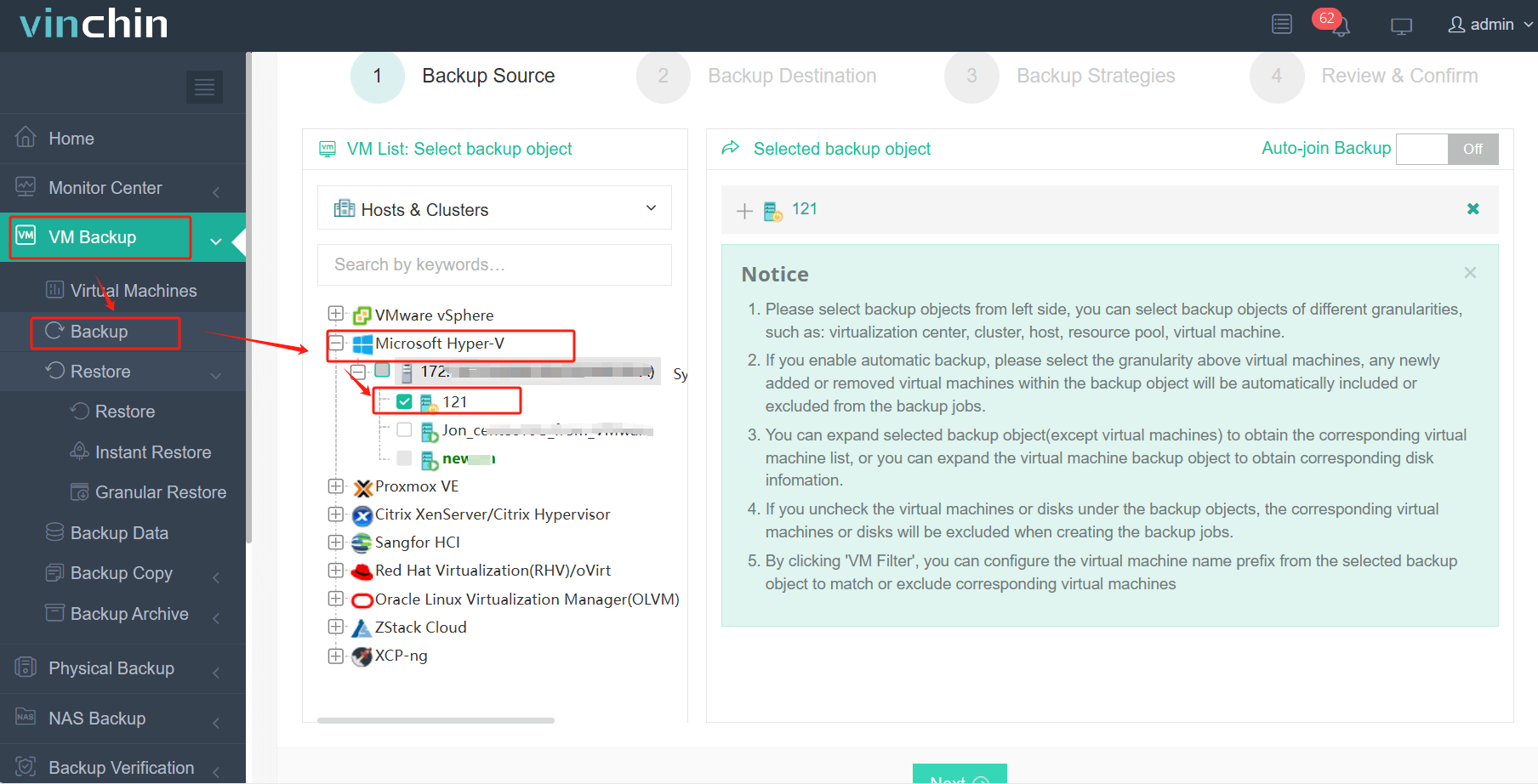
Step 2: Choose the backup storage
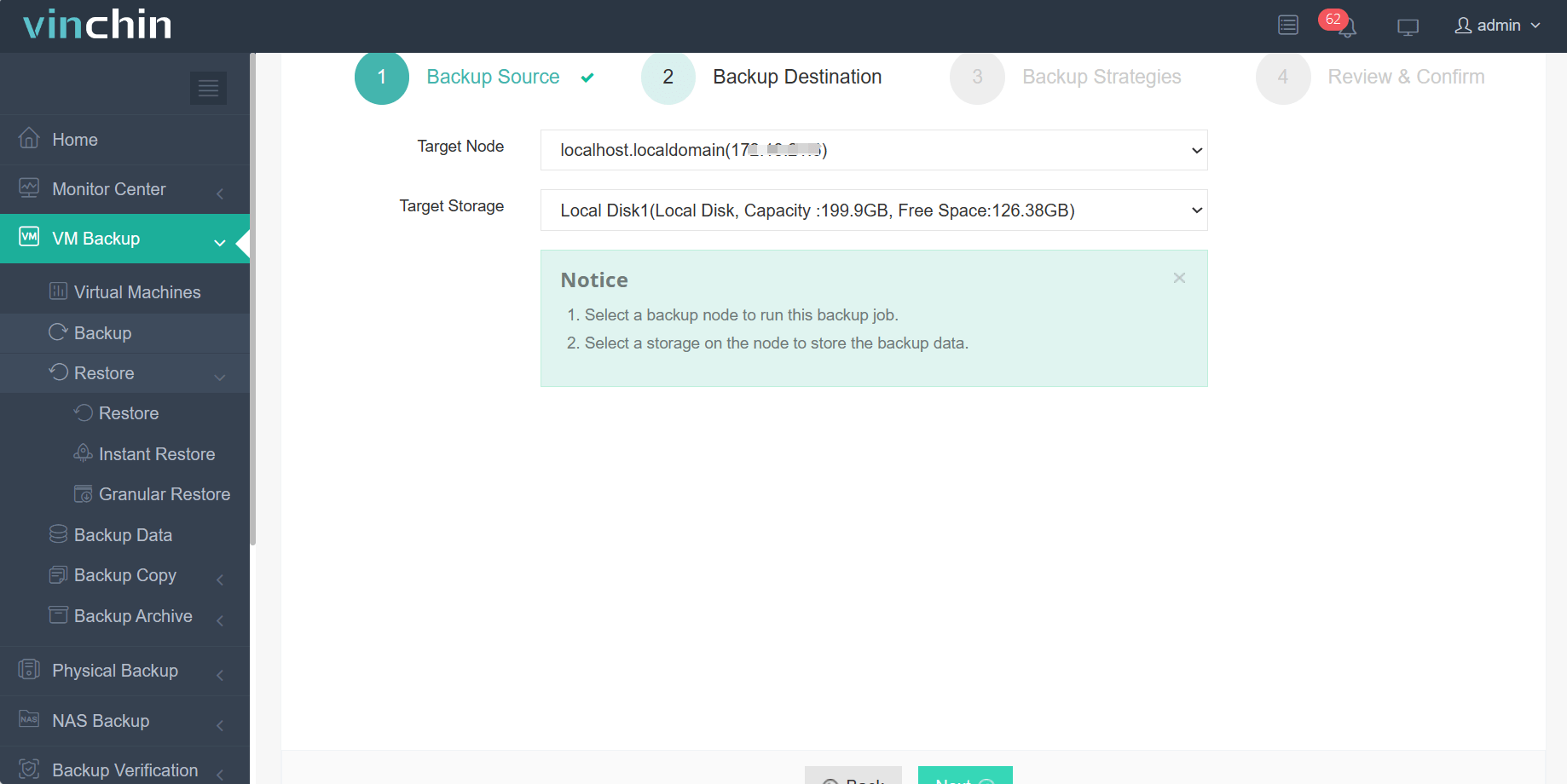
Step 3: Configure the backup strategy
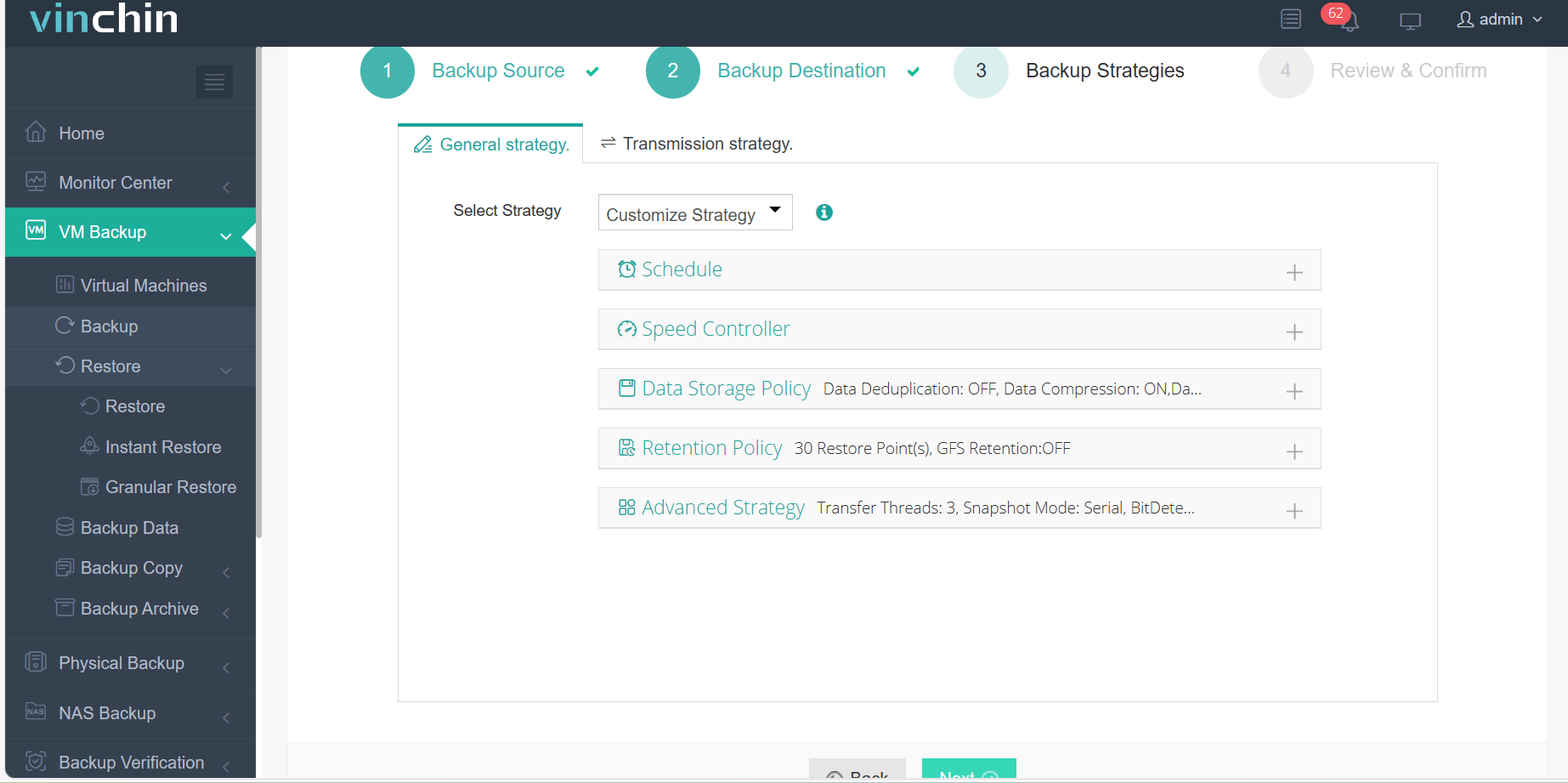
Step 4: Submit the job
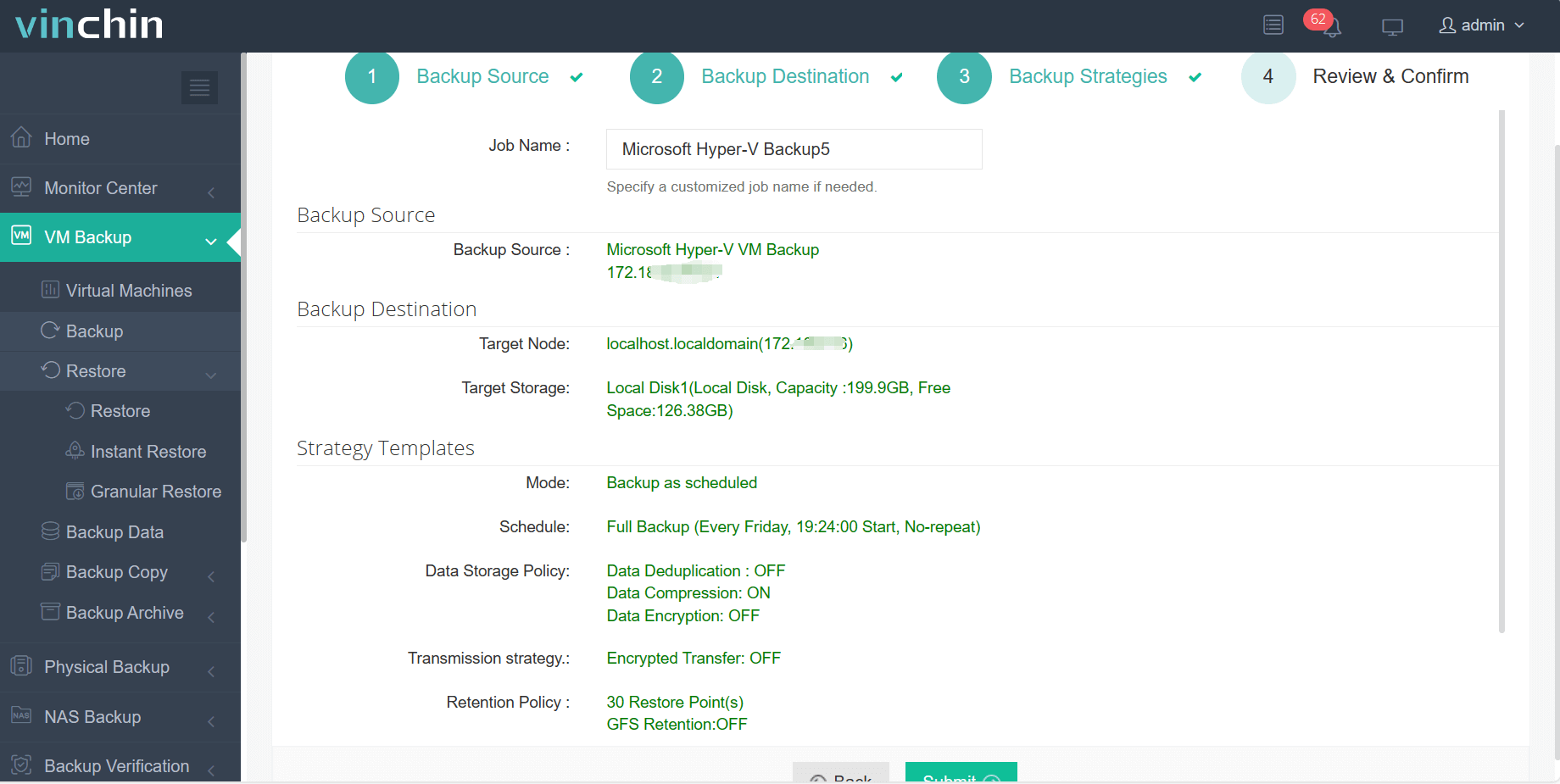
Recognized globally by thousands of organizations and rated highly by users worldwide, Vinchin Backup & Recovery offers comprehensive enterprise data protection—with a free 60-day full-featured trial available now.
Shutdown Hyper V VM PowerShell FAQs
Q1: What happens if I use Stop‑VM –TurnOff on production workloads?
A1: The selected virtual machine powers off instantly without saving open files—which may cause application/data loss especially on busy servers!
Q2: How do I check Integration Services status before attempting graceful shutdown?
A2: Run Get‑VMIntegrationService –VMName “YourGuest” then confirm “Shutdown” service shows Enabled & OK status in output table view.
Q3: How can I schedule automatic nightly shutdowns of certain VMs?
A3: Create Task Scheduler jobs calling scripts like Stop‑VM –Name ‘MyNightlyTest’ at desired times—or use Register-ScheduledJob module within Windows itself!
Conclusion
PowerShell makes shutting down Microsoft Hyper‑V virtual machines quick whether you need safe orderly closure—or must force things during emergencies! For total peace of mind combine these techniques with robust backups from Vinchin—the trusted choice worldwide among IT professionals seeking reliable disaster recovery solutions.
Share on:





